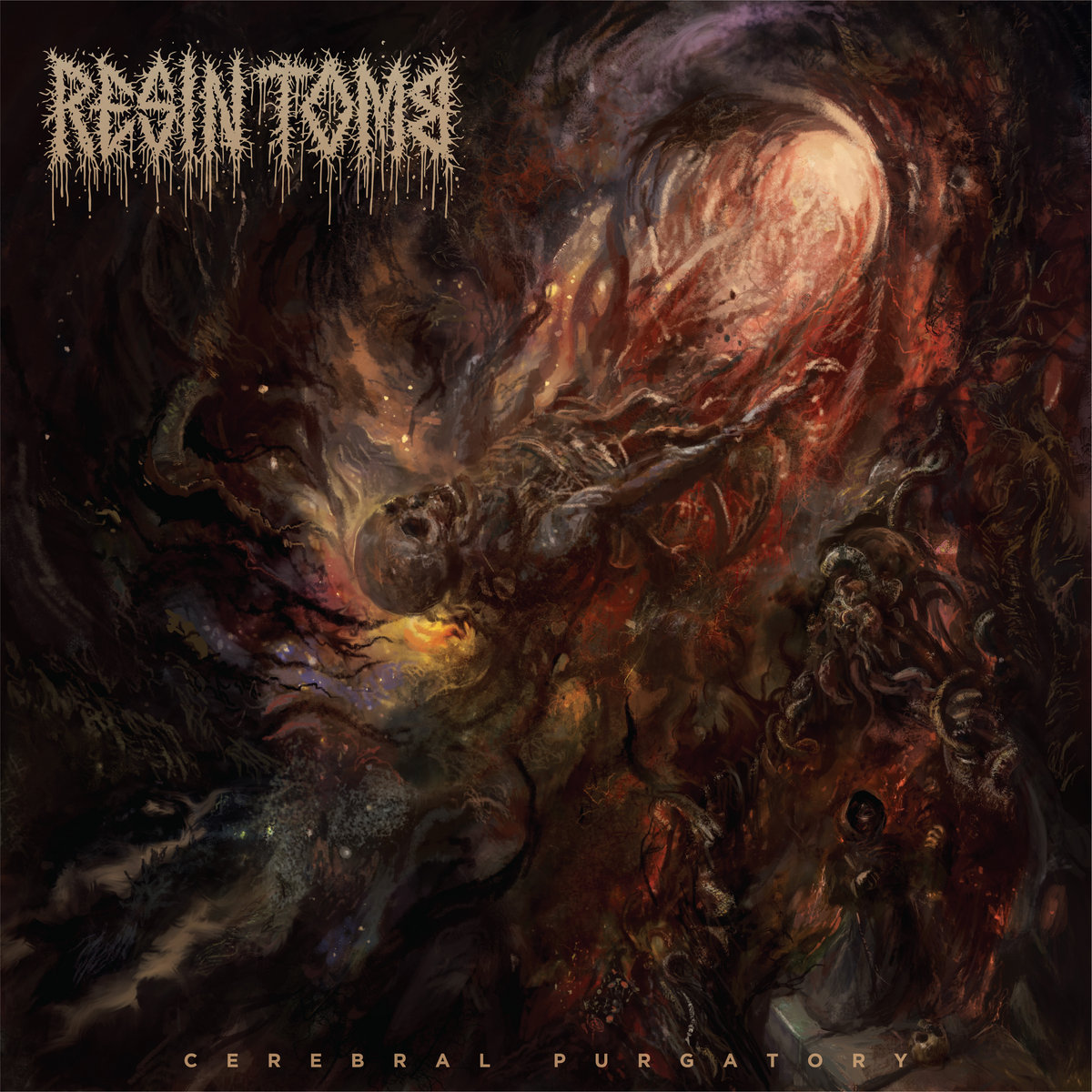
Innovators - Part 2
AP's fourth annual Innovators special spotlights some of the people, products and ideas that are shaping the music industry's new landscape. This year's Innovators are redefining the relationships between you and your favorite art—how it's made, sponsored, delivered, promoted and consumed. Whether you're going to a show, joining a fan club, watching a video clip online or buying a limited edition vinyl pressing of your favorite band's new release, these Innovators are thinking of ways to improve the experience. In the first installlment, we introduce four of the industry's most forward thinkers.
WHY THEY’RE INNOVATORS: Circa Survive’s “Creature Club” offers diehard supporters unprecedented access to the band. For $40 a year, super-fans can get exclusive demos, photos, blog posts and merch; they also receive surprise limited-run swag in the mail, such as exclusive 7-inch singles, T-shirts and prints. But that’s not all: When CS come to town for club shows, Creature Club members get to enter the club early, watch soundcheck and hang out with the band before the show. Still not sold? At one stop on the Circa’s last tour, the group let as many as 30 Creatures onstage during their set to sing background vocals for “Spirit Of The Stairwell.”
YOU’RE THE INSPIRATION: Frontman Anthony Green says the Creature Club was inspired by similar outreach programs from bands like Radiohead, Pearl Jam and Coheed And Cambria. But more importantly, as his group grew, launching a fan club was no longer just a cool idea—it became necessary. “It was getting harder and harder to get in touch with our fans,” explains Green. “There wasn’t really a way, at a show, to go out and hang out with them, because of how many people are [attending]. We never expected to meet everybody, but we wanted a chance for the hardcore fan to have access.”
IMPACT: Green says the club has over 600 members. The band’s labels, Atlantic/Equal Vision, helped the group crunch numbers to make sure the band wasn’t losing on creating the packages. Aside from that, Green doesn’t know whether Circa Survive makes anything from the fan club fees: The group doesn’t see the Creature Club as a moneymaker, but rather as an investment. “As a band, you want to put ads on the radio and in magazines,” says Green, “but nothing is as good as a some kid turning to his brother or somebody he works with and saying, ‘I got to meet this band last night, I listen to them all the time, they were really nice guys, I got to sing with them.’ It’s cool to make that happen.”
MAKE IT WORTH IT: Green stresses that a good fan club doesn’t just collect money and send a couple mass-mailings. The whole band are involved in the Creature Club, from meet-and-greets to picking bonus items. (The spring mailing hasn’t gone out, and Green won’t say what it is, because he doesn’t want to ruin the surprise.) “I know it’s not the coolest thing ever to be like, ‘Hey, you need to give 40 bucks to get exclusive content,” says Green. “We were really just focused on the fans, making sure if you were going to spend $40, you were going to get $40 worth of content. I feel what makes us special as a band is that we’re so connected to the people who like us. [The Creature Club] helps us out a lot.” — D.X. Ferris (You can catch Circa Survive at the Bamboozle this Memorial Day Weekend!)
 YANCEY STRICKLER of KICKSTARTER
YANCEY STRICKLER of KICKSTARTER
WHY HE’S AN INNOVATOR: Yancey Strickler and Kickstarter have the answer to one of life’s most unsettling questions: “Where am I going to get that kind of money?” The web-based fundraising nexus greets visitors (whether they’re artists or fans) with the promise of “a new way to fund and follow creativity.” Aspiring creators and craftsmen post an online pitch, providing sample art, photos, music or video. And if visitors like it, they can contribute as little—or as much—money as they like. In exchange, you might get a one-of-a-kind keepsake, a producer credit in the product or a warm-and-fuzzy feeling from knowing that you helped your favorite artist create your new favorite record. If it’s money you need, using Kickstarter isn’t anything like applying for a bank loan. “This is the last place in the world you want to come with your business proposition and your PowerPoints and your PDFs,” explains cofounder Strickler. “This is more about, ‘Here’s who I am, here’s why you should care, here’s what’s special about me, and here’s why you’re going to benefit by being involved.”
IMPACT ON THE SCENE: Strickler says that in the last two years, Kickstarter has helped raise over $40 million and fully funded 6,000 projects. The site has funded movies, books and music, including the long-delayed second Weerd Science album from former Coheed And Cambria drummer Josh Eppard. When troubadour Ace Enders was so financially distressed that he nearly quit music, Kickstarter got him back in the game: Enders had hoped to raise $10,000 to create, document and promote the third I Can Make A Mess Like Nobody's Business album. Less than two months later, fans have committed over $30,000. Ten projects have raised over $100,000 each, and more than $1 million travels through the site every week.
YOU CAN MAKE YOUR VISION A REALITY—BUT START NOW: Kickstarter took almost seven years to launch. Strickler was a music journalist, co-founder Perry Chen promoted concerts. The fledgling partners didn’t even know how to write code, and they didn’t have enough money to fund the endeavor. But they had a vision and a feeling that it would work. Now the company has 20 employees and has been profitable for the last year. “I think that one of the things that helped us was out naïveté,” says Strickler, 32. “We didn’t know how we could screw up. We didn’t know how hard it would be. We didn’t know the kinds of things we were supposed to know. We just did what felt right to us and [did] what we believed in. And we had a naïve belief that would be enough. There were many years when it seemed like this was not going to happen, and somehow it did.”
DEFINITION OF AN INNOVATOR: Strickler has personally invested in over 350 Kickstarter projects. “I respect the hell out of people who turn nothing into something, who just decide they’re going to make it,” he says. “They’re just going to make the thing, whether people care or not. They’re just going to do it, and they believe in themselves.” — D.X. Ferris
 JACOB EDWARDS, INDIEMERCH
JACOB EDWARDS, INDIEMERCH
WHY HE’S AN INNOVATOR: Making merch is the easy part; selling it is harder. And if you sell it online, the hardest part is getting paid for it. The minds behind IndieMerch figured it all out. Jacob Edwards spun off the online store IndieMerch from Jakprints, the wildly successful printing company that specializes in making eye-popping tees and gear using organic and eco-friendly material. From soft cotton tees to software, IndieMerch manages the whole merchandise chain. Last year, the business was so popular, it had a waiting list of over 7,500 eager prospective clients who wanted to partner with them to sell CD, shirts, hoodies and combo packs of all of the above. “If you create super high-quality merchandise,” says Edwards, “people will buy it.”
SPEED AND TRANSPARENCY: Unlike most online retailers, IndieMerch doesn’t make clients wait a month to know what their they’re selling, in what volume, and, thus, how much they’re making. Cutting-edge software has made slow-moving accountants a thing of the past, and IndieMerch calculates the yields up-to-the minute. The company fulfills most orders within a business day, and then the money’s ready. “Making bands wait a month to find out what they made is absolute bullshit,” says Edwards, who first entered the business as a musician. “We have pay-on-demand technology, which means the second an item ships, you see it [on your account records] and you get paid. It blows people’s minds when they get a contract with IndieMerch, and they log in and realize, ‘Holy shit, I can see what’s going on.’”
YOUR BAND IS YOUR BRAND: In his time with Jakprints, Edwards has learned that a band that offer more merchandise will sell more merchandise. IndieMerch still works hand-in-hand with Jakprints and their clients to create not just new goods, but new types of goods. “In the past, people haven’t looked at merchandising as brand management,” explains Edwards. “We look at everything. If you think of bands as brands, you start realizing why you need different types of styles. There are girls who want to buy shirts, too, but a lot of these guys will just put out another black T-shirt… We’ve definitely got our finger on the pulse.” — Brendan Manley
 DAVID KARP, TUMBLR
DAVID KARP, TUMBLR
WHY HE’S AN INNOVATOR: David Karp made a name as the chief technology officer of New York City parenting site UrbanBaby; then he made a mint when he sold it to CNET in 2006. Over the next year, he became enthralled with the new generation of microblogging websites making it easier to create content and connect to other blogs. When the technological world collectively failed to design the kind of simple-to-use software he wanted, the 20-year-old wunderkind built it himself. Today, that site is called Tumblr, and it hosts 14 million blogs, which are maintained by a staff of 25 employees, from programmers to community outreach representatives. With a few easy clicks, you can post video, quotes, pictures or all the above. “I realized you could get rid of a lot of the editorial crust–or what for me was crust, the editorial voice–and realized you could replace it with a really aesthetically beautiful container for all this stuff you’re sharing,” says Karp. “Tumblr was really the attempt to create the first consumer-friendly tool version of that.”
KEEP IT SIMPLE: Karp has seen other major sites innovate their way from phenomenal to practically vacant by piling on feature after feature until they’re no longer functional. “Our real discipline around interface design and the way we build our product,” explains Karp, “[is] for everything we put in, we try to take something out. We integrate new features, but we really strive for something that is perfectly simple and perfectly executed. And if it’s not, we don’t hesitate to pull a feature.”
HEY YOUNG WORLD, THE WORLD IS YOURS: Karp has been an in-demand tech mogul since he was 17. Now, at the advanced age of 24, the Tumblr CEO is still younger than most of the people he strikes major deals with. While many young go-getters try to bluff their way into the big time, Karp uses the opposite approach: Not only is he not afraid to show what he doesn’t know; he makes that uncertainty an asset. “One incredibly effective tool is to just ask for advice constantly,” says Karp. “I don’t think any adult or surly old dude who’s been in the industry forever is going to give you a hard time if you’re coming to them for advice. People with experience are extraordinary resources, and I’ve avoided making many mistakes because of them. One of the best things you can do is to find mentors or people who are doing the things you want to be doing, and go to them for advice. It’s a great foot to get off on. I do that with our team, and I do that with investor [presentations]. Much of what I put on the screen is questions.” — D.X. Ferris








